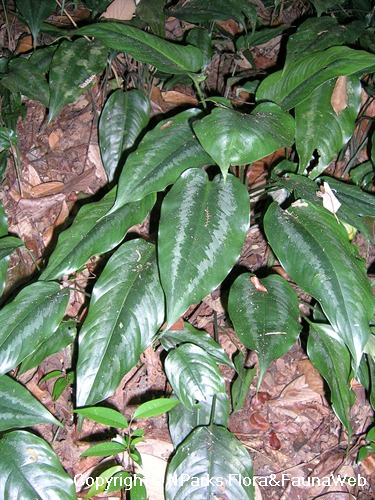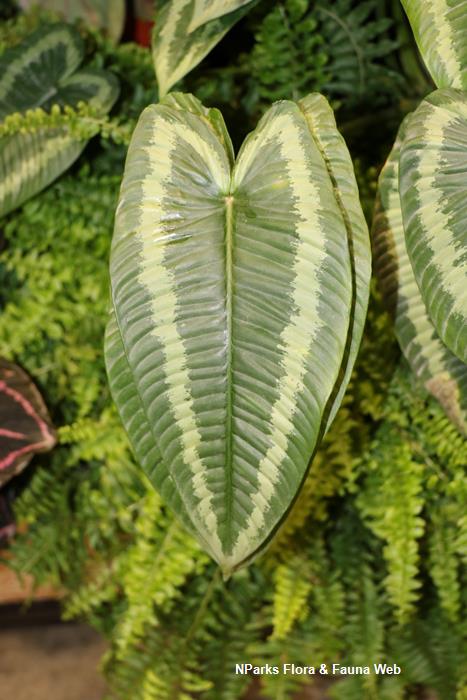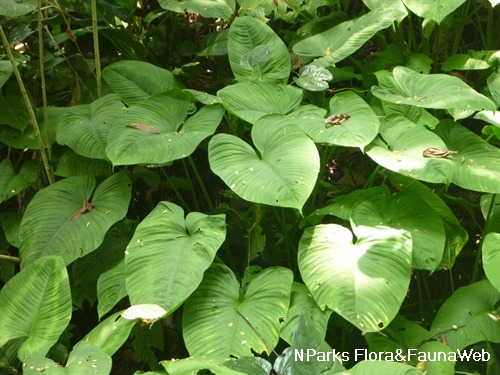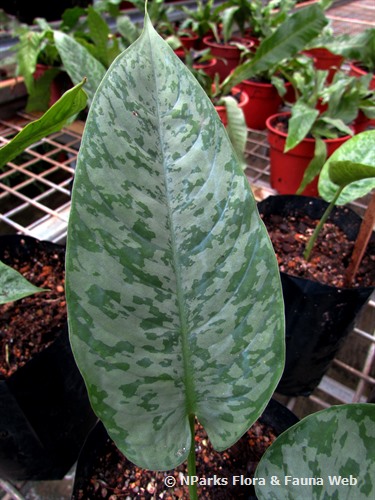
Back
Schismatoglottis wallichii Hook. f.
| Family Name: | Araceae |
| Synonyms: | Schismatoglottis wallichii Hook. f. var. oblongata, Schismatoglottis conversa, Schismatoglottis longicuspis |
Name
Classifications and Characteristics
| Plant Division | Angiosperms (Flowering Seed Plants) (Monocotyledon) |
|---|---|
| Plant Growth Form | Herbaceous Plant |
| Lifespan (in Singapore) | Perennial |
| Mode of Nutrition | Autotrophic |
| Plant Shape | Irregular |
Biogeography
| Native Distribution | In Malesia, from Peninsular Malaysia, Singapore, Sumatra, Java, Borneo, Philippines, and east New Guinea. |
|---|---|
| Native Habitat | Terrestrial (Primary Rainforest, Secondary Rainforest, Freshwater Swamp Forest) |
| Preferred Climate Zone | Tropical |
| Local Conservation Status | Native to Singapore (Vulnerable (VU)) |
Description and Ethnobotany
| Growth Form | It is a herbaceous plant with short stems. |
|---|---|
| Foliage | Leaves are oblong-ovate to oblong-lanceolate, with long petioles measuring 15-45 cm long. The primary leaf color is green, often variegated with dark-green and grey strips. |
| Flowers | Its inflorescence is a spadix. |
Landscaping Features
| Desirable Plant Features | Ornamental Foliage |
|---|---|
| Landscape Uses | Parks & Gardens |
Plant Care and Propagation
| Light Preference | Semi-Shade |
|---|---|
| Water Preference | Lots of Water |
| Rootzone Tolerance | Moist Soils, Well-Drained Soils |
| Propagation Method | Division |
Foliar
| Mature Foliage Colour(s) | Green, Silver / Grey |
|---|---|
| Leaf Area Index (LAI) for Green Plot Ratio | 3.5 (Shrub & Groundcover - Monocot) |
Floral (Angiosperm)
| Flower Grouping | Cluster / Inflorescence |
|---|---|
| Inflorescence Type | Spathe & Spadix |
Image Repository
Others
| Master ID | 1149 |
|---|---|
| Species ID | 2442 |
| Flora Disclaimer | The information in this website has been compiled from reliable sources, such as reference works on medicinal plants. It is not a substitute for medical advice or treatment and NParks does not purport to provide any medical advice. Readers should always consult his/her physician before using or consuming a plant for medicinal purposes. |



